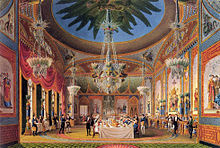Whilst on a trip to Peru in 2009 I met up with Mark, Carole, Lisa and Marilyn and we became firm friends. Four of us were from the UK and lived within visiting distance. Our fifth friend was from Canada so not so easy to visit. We made promises that we would all keep in touch and perhaps meet up in other parts of the world Whilst those of us in the UK have met up on numerous occasions and have had weekend trips to Europe, only four of us were in China together in 2010 and a different group of four in Costa Rica in 2011. So it wasn't until 2013 all five of us managed to meet up in Berlin. A great reunion. Last night four of us were together again reliving our past escapades. Today three of us went to Brighton for a day at the sea side.
We walked along the pier. The pier was opened in 1899 at a cost of £27,000. A huge sum of money at that time.

This was the West pier which closed in 1975 but was subsequently destroyed by fires and storms and the remaining iron structure partly demolished in 2010.
The pier funfair was empty and looked very forlorn and sad.

Looking further along the coast you can see Brighton's latest attraction the i360. It claims to be the world's first vertical cable car and takes you up to 450ft giving great views across Sussex, although half of that would be out to sea!
The pod, which can accommodate 200 people looking out from the windows at the same time, rotates slowly giving you a 360 deg view. The cost is £15 but we decided not to bother. Instead we wandered back into the town for a pub lunch
Afterwards we visited the Brighton Pavilion. Although I have seen it many times I have never been inside. I assumed there wasn't much to see. No cameras allowed, unfortunately, but what a gem. An absolute wonder and delight of Georgian extravagance. It was built as a Royal residence for George, Prince of Wales who later became George IV. It was built in three stages starting in 1787. The domes and minarets were added by the architect John Nash in 1815.
Queen Victoria disliked Brighton and was persuaded to sell the Pavilion to the town who used it as assembly rooms. The fixtures and fittings had been removed and relocated to Buckingham Palace and Windsor but in the late 1860s Queen Victoria returned large quantities of unused fixtures and fittings. George V and Queen Mary returned many more after the first World War.
Since the end of WW2 Brighton council has spent time and money restoring the Pavilion to its state at the time of King George IV. In the 1950s Queen Elizabeth II gave over 100 items of furniture on permanent loan to the Pavilion.

This is the Banqueting room taken from John Nash's
Views of the Royal Pavilion 1826
Our final outing of this holiday was to have a delicious cream tea on the balcony of the Royal Pavilion overlooking the gardens. That night we needed to be at a hotel near Gatwick so I could get M to the airport early the next morning. We had had a great time, with lots of laughs along the way and we are looking forward to our next holiday together wherever or whenever that might be.


 Roman discoveries are still being made as archaeologists must excavate an area before any new construction within the City of London can begin. In 1988 Museum of London archaeologists discovered the site of an amphitheatre beneath the Guildhall Yard. It was built in 70AD as a wooden structure but was restructured in the 2nd century to accommodate 6000 spectators. After the Romans left Britain in the 4th Century the amphitheatre was dismantled and the stone used for building materials elsewhere,
Roman discoveries are still being made as archaeologists must excavate an area before any new construction within the City of London can begin. In 1988 Museum of London archaeologists discovered the site of an amphitheatre beneath the Guildhall Yard. It was built in 70AD as a wooden structure but was restructured in the 2nd century to accommodate 6000 spectators. After the Romans left Britain in the 4th Century the amphitheatre was dismantled and the stone used for building materials elsewhere,























































